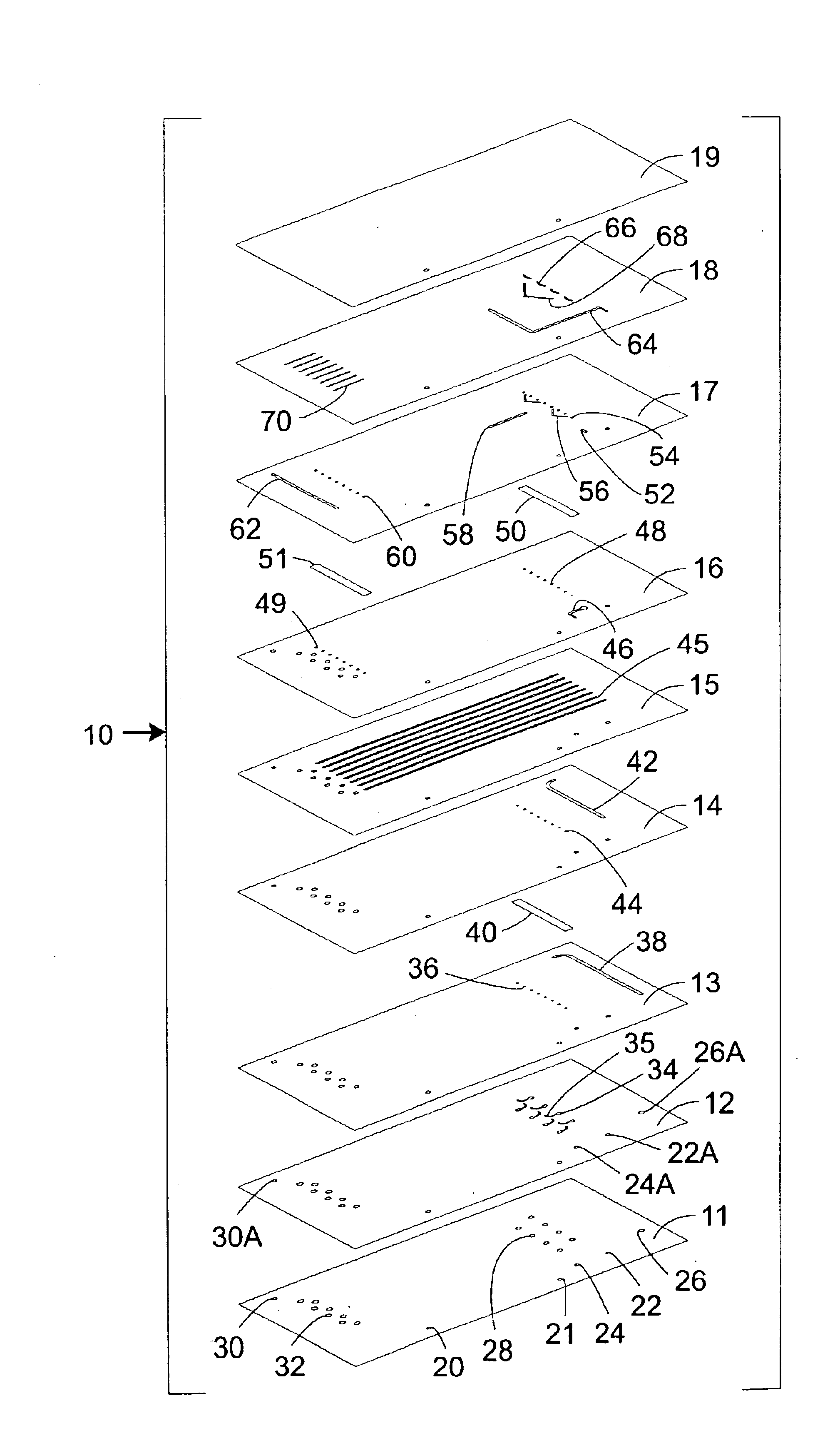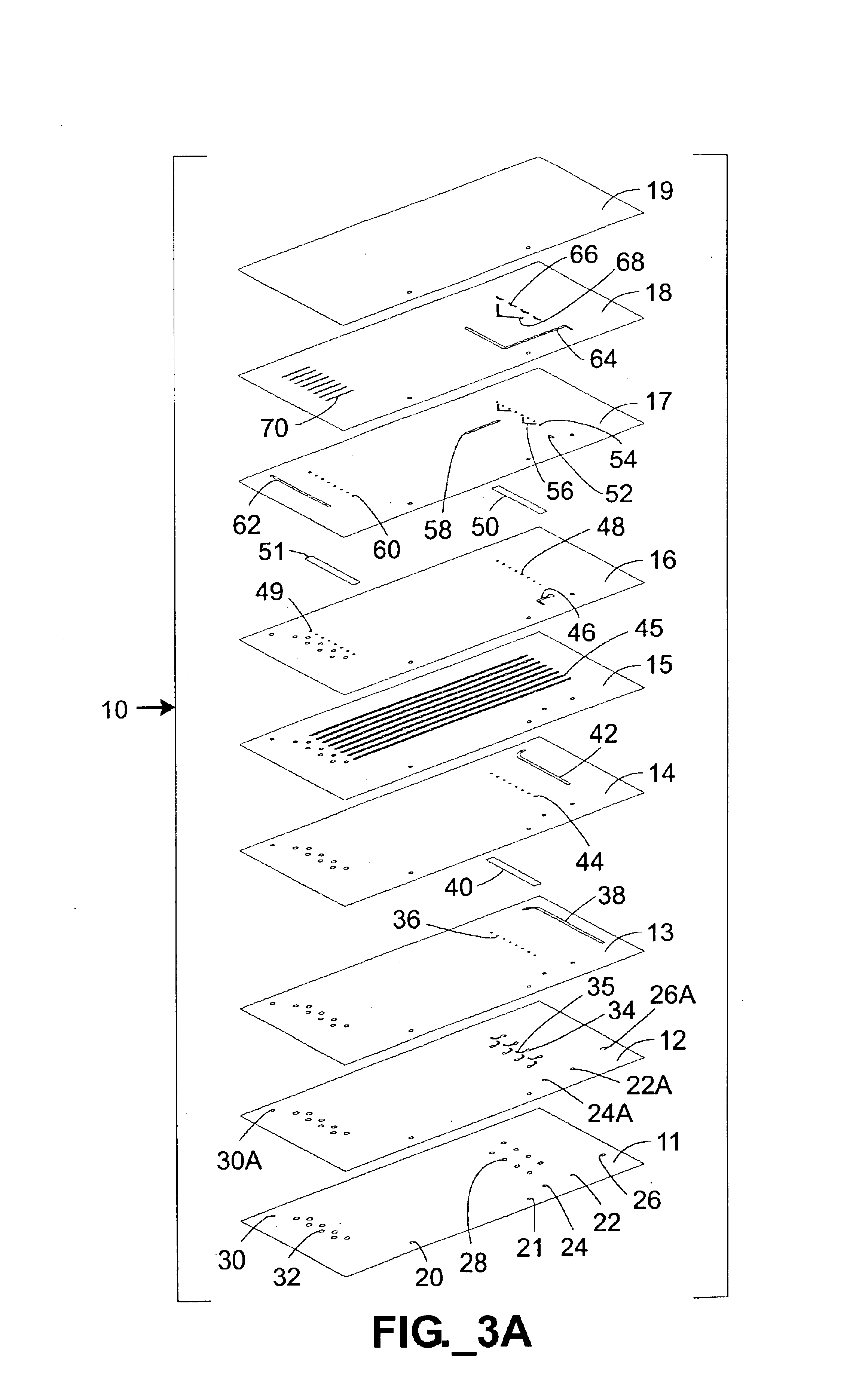Microfluidic multi-splitter
a multi-splitter, microfluidic technology, applied in the direction of separation process, instruments, laboratory glassware, etc., can solve the problems of high tool-up cost of such techniques, inability to quickly prototyping and manufacture flexibility, and inability to control the volume of fluid used in the process,
- Summary
- Abstract
- Description
- Claims
- Application Information
AI Technical Summary
Problems solved by technology
Method used
Image
Examples
Embodiment Construction
Definitions
The term “column” as used herein refers to a region of a fluidic device containing stationary phase material, typically including packed particulate matter.
The term “microfluidic” as used herein refers to structures or devices through which one or more fluids are capable of being passed or directed and having at least one dimension less than about 500 microns.
The term “stencil” as used herein refers to a material layer or sheet that is preferably substantially planar through which one or more variously shaped and oriented portions have been cut or otherwise removed through the entire thickness of the layer, and that permits substantial fluid movement within the layer (e.g., in the form of channels or chambers, as opposed to simple through-holes for transmitting fluid through one layer to another layer). The outlines of the cut or otherwise removed portions form the lateral boundaries of microstructures that are formed when a stencil is sandwiched between other layers such...
PUM
 Login to View More
Login to View More Abstract
Description
Claims
Application Information
 Login to View More
Login to View More - R&D
- Intellectual Property
- Life Sciences
- Materials
- Tech Scout
- Unparalleled Data Quality
- Higher Quality Content
- 60% Fewer Hallucinations
Browse by: Latest US Patents, China's latest patents, Technical Efficacy Thesaurus, Application Domain, Technology Topic, Popular Technical Reports.
© 2025 PatSnap. All rights reserved.Legal|Privacy policy|Modern Slavery Act Transparency Statement|Sitemap|About US| Contact US: help@patsnap.com



